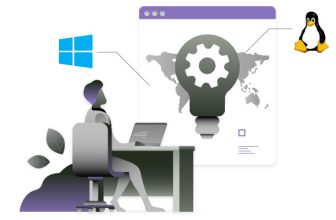What Exactly is NAS Software and How Does it Work?

What Exactly Does "NAS" Mean?
Data is a core asset for any business. Companies must have reliable, secure, and fast access to their data for smooth functioning. If data is not available immediately, it can result in poor customer service and lost business opportunities. Thus, companies need to address data storage-related issues to ensure business agility. One of the commonly leveraged on-premise data storage solutions is NAS.
Network Attached Storage or NAS software functions as centralized solutions to store, organize, and retrieve data. It is a file-level storage architecture providing networks with a single-access point to storage drives.
NAS programs are purpose-built for with advanced fault-tolerance, management, and security features. It resides on the LAN with its unique IP address. It is one of the best and most popularly preferred storage solutions for enterprises and small businesses. It is because NAS is scalable, effective, and low-priced.
What is NAS Software and How Does it Work?
NAS software is file-level storage that connects to a network. It evolved from file servers prevalent in the 1980s that offered network clients access to files. Typically, NAS devices include a built-in operating system with bundled hardware and software. It makes use of file-access protocols like CIFS or NFS. Across a heterogeneous client and server environment, NAS enables file sharing and data access.
So, how does NAS work?
Hardware: It consists of RAM, processors, storage disks, or drives.
Software: Typically embedded in the hardware, the NAS software is deployed on the lightweight OS. There are only two types of requests the NAS software sends and receives: store data and share files.
Protocols: The data transfer protocols facilitate the sharing and retrieval of data from the NAS for clients. Two fundamental protocols include transmission control protocol (TCP), and internet protocol (IP). One can format the files that get transferred across these protocols as Server Message Blocks (SMB), Network File Systems (NFS), or Apple Filing Protocol (AFP).
Rather than using USB cables, the NAS system connects via a network or the Ethernet port of your Wifi. It accesses data as files from any computer or mobile device given that it is connected to the same network.
What are the Key Benefits of NAS Software?
Some of the key benefits associated with deploying NAS software include:
- Centralize data storage safely and reliably.
- Lower cost and smaller footprint to save space.
- Better scale-out capacity, you can add more storage capacity to NAS without any interruption in the network.
- Eliminates performance glitches as NAS is dedicated to file serving.
- Simple to operate.
- Supports varied applications.
- Easy setup and manageability as NAS architectures typically have pre-installed appliances with a streamlined OS.
- Seamless accessibility of each networked device to NAS.
- Improved fault tolerance by formatting NAS with a redundant array of independent disks or replicated disks (RAID).
Top 5 Best NAS Software in 2022
The NAS software market is witnessing rapid growth as enterprises’ storage needs are increasing. Here are the top 5 best NAS software that are leading the race in 2022:
FreeNAS or TrueNAS
TrueNAS (or FreeNAS) is a free and open source NAS software. It uses the OpenZFS file system. Produced by iXsystems, it is highly fast, safe, and economical. It is simple and non-disruptive and comes with white glove support. The advanced TrueNAS comes with full-disk encryption for better security. It also has a plug-in architecture to accommodate third-party software.
XigmaNAS
Based on FreeBSD, XigmaNAS is yet another popular NAS software that is free of cost. It is an embedded open-source NAS distribution. It has a dedicated management web interface. It is highly suitable for home and enterprise environments because of its easy setup, and ability to share large data volumes. It also helps share multimedia with other devices by incorporating various streaming features.
Rockstor
The Linux-based NAS, Rockstor, is powered by BTRFS (B-tree file system). Rockstor comes with advanced cloud storage and NAS features. You can leverage the BTRFS features and capabilities without requiring deep knowledge of Linux. Rockstor’s Web-User Interface facilitates easy manageability. It offers effective scaling capacity, reduces storage costs, and gives maximum performance and privacy.
Amahi
Amahi is an ideal NAS server for beginners. Based around Fedora, it has a very simple web interface. It is highly versatile and helps to run a feature-rich home server with lesser effort. Amahi offers the best media, backup, and web applications. It is Linux-based and open-source, and it supports all the standard file-sharing protocols. Amahi deploys Greyhole for storage pooling.
OpenMediaVault
With a very robust NAS pedigree, OpenMediaVault is the ultimate next-gen NAS storage. It is based on the Debian OS. OpenMediaVault is primarily designed for use in small offices and homes, typically with low-powered equipment. Moreover, it has low system requirements as compared to FreeNAS. Its active development and stability make it a popular choice.
What are the Minimal Hardware and Software Requirements for NAS Software?
The primary hardware needs for NAS software include:
- Processors
- Random-access Memory (RAM)
- Storage controller
- Drive Bays
- Network Interface Card (NIC)
- Power supply
The NAS hardware, known as the “head” or “box” has an IP address assigned to it. It enables it to operate on any platform or OS.
NAS software is deployed on a lightweight OS. For the OS, you can use any of the top and free NAS software listed above, or any other of your choice. Based on how much experience you have with the software packages, you can set it up.
Is NAS Software Necessary for Everyone?
NAS software can help improve your IT economics by streamlining your data storage and retrieval. It can effectively consolidate your storage and server infrastructure, and make data continually accessible.
If you need to access files from multiple computers, you should consider incorporating NAS software. It helps multiple devices easily access the same file sets. NAS attaches multiple workstations and functions as a shared storage point. Thus, a NAS drive facilitates effective collaboration for IT teams. If you simply seek to share and store data only on your network or system, a NAS may not be necessary.




